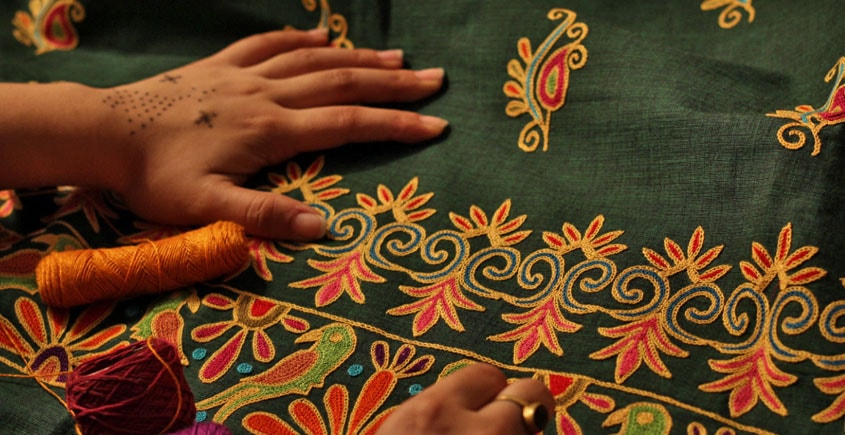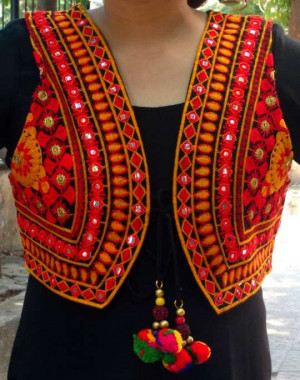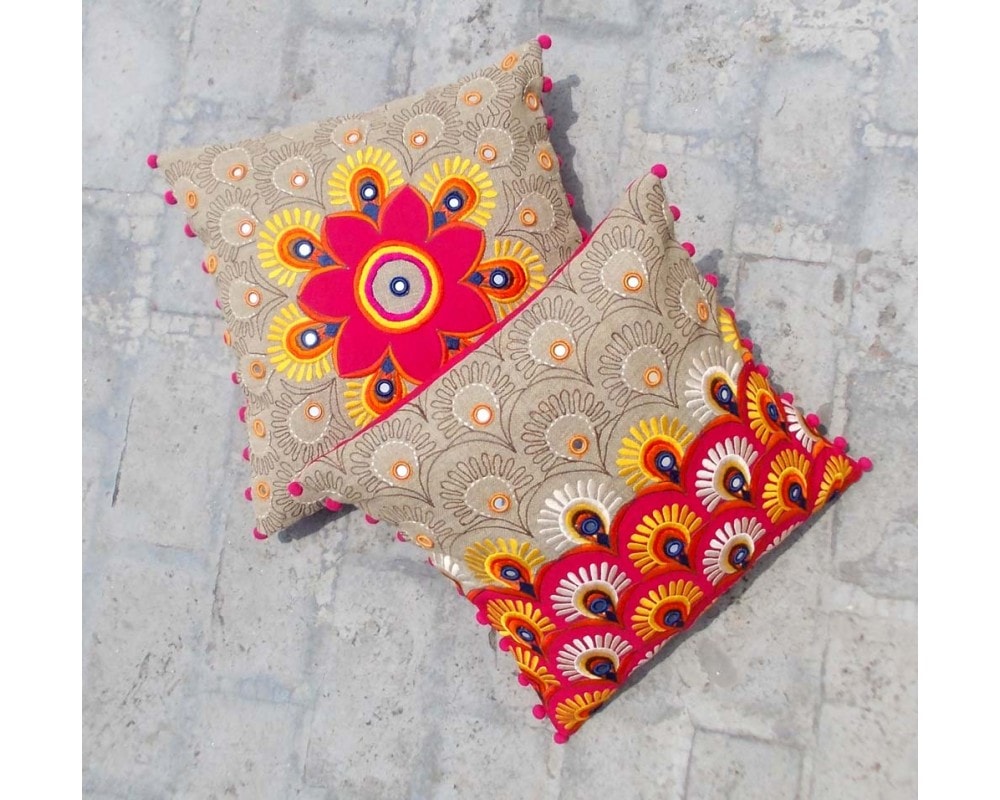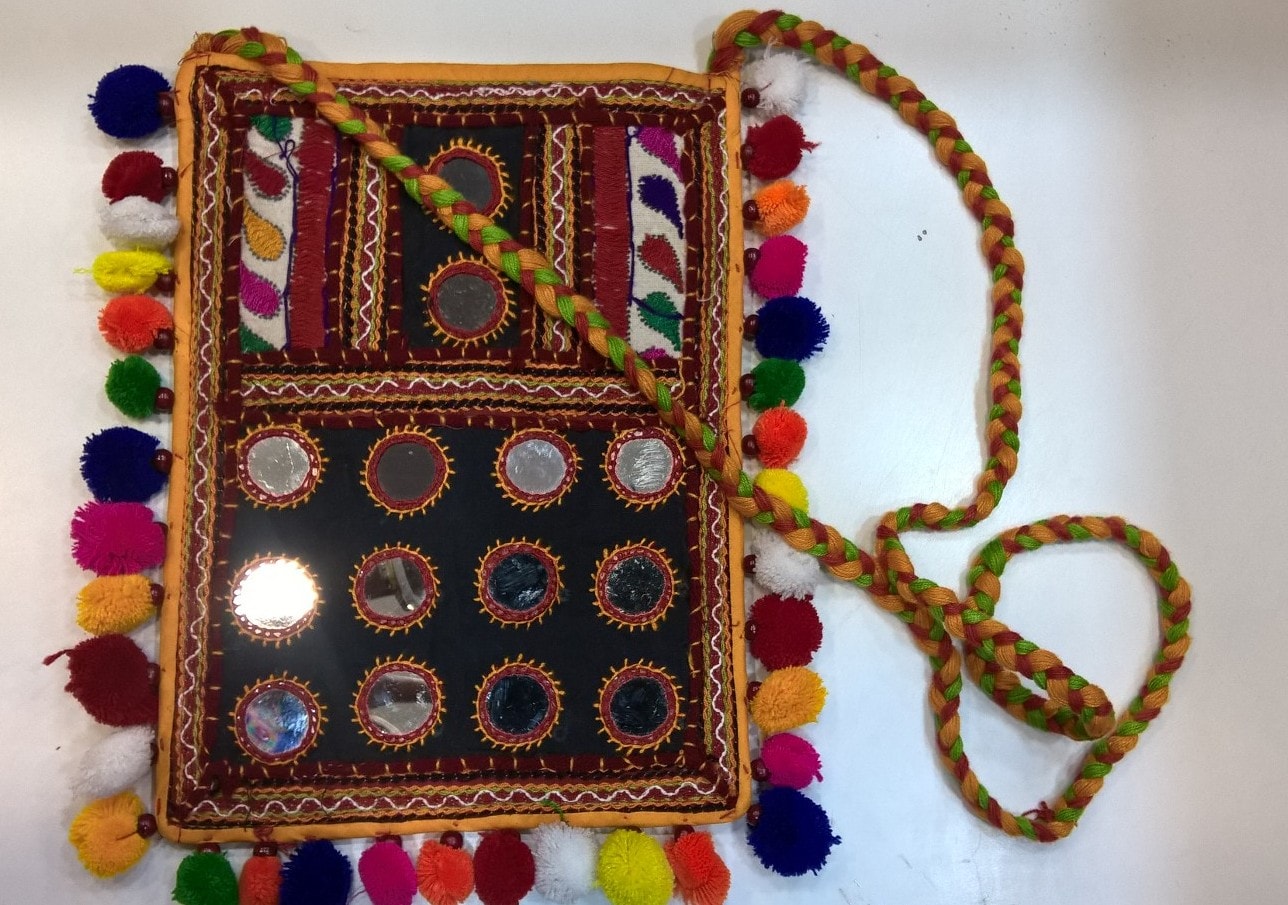Kutch Hand Embroidery
Kutch Hand Embroidery is one of the many art forms that exhibit the ethnic culture of India. It is a
textile and handicraft art tradition that has its roots in tribal regions of Gujarat. There is no denying the fact that India is home to several varieties of art forms each reflecting the distinct color of our nation and Gujarat is the hub of most of the fascinating art forms.
It has carved a niche for itself in our contemporary lives. The
traditional art form is appreciated and accepted all over the world. It adorns garments to wall hangings, toran, bed covers, bags and even camel decorations.

Kutch hand embroidery
The interesting part about this art is that it is mostly practiced by the Indian women. The art of
Kutch Embroidery has been instrumental in empowering the rural women of Gujarat and continues to provide them opportunities to grow and prosper.
How Does Kutch Hand Embroidery Come Into Existence?
The
history of the Kutch hand embroidery can be traced back to 16th and 17th centuries. It is believed that the migrants from the countries such as Afghanistan, Greece, Germany, Iran, and Iraq brought it to Gujarat. The 'Kathi' cattle breeders ensconced in Kutch and developed the fine art of needle and patchwork. Folklore also says that the "mochis" were educated by the Muslim saint in Sindh and this was how this embroidery took shape in India.
Features of Kutch Hand Embroidery

eye-catching patterns
It draws inspiration from various architectural designs and craft patterns. The beautiful human motifs, extensive needlework churn out splendid patterns on the fabric. The medieval Persian and Mughal culture also leave its imprints on the kutch embroidery.
-
Fabric
The major fabric employed to craft superb kutch-filled products is cotton. Many artisans also bring silk to use to design magnificent products. The woolen or silk thread is sewn meticulously to fashion gorgeous merchandise.
-
Aesthetic Features

Kutch work cushions
The articles produced out of kutch work entail eye-popping hues along with mirrors and beads. The seamless composition of a variety of colors combined with intricate needlework enhances the beauty of the articles.
There are majorly
7 different types of Kutch embroidery. They are -
Suf, Khaarek, and Paako, Rabari, Garasia Jat, and Mutava.
Who is propagating the Kutch Embroidery?
Several men and women from Gujarat are engaged in this traditional art form. Many communities residing in the Saurashtra and Kutch area have been carrying forward the legacy of this art. For womenfolk like the one of Raabari community, this started as a vocation and eventually turned out to be a source of their income. Presently, different villages are involved in bringing
the dying art form of Kutch embroidery to the fore. These distinctive communities have their unique style of embroidering.
Popularity On The Global Platform

Beautiful Handbag
The
ethnic culture of India continues to flourish seamlessly over the past years. The
Kutch motifs have gained immense recognition globally and are set to take over the market for modern goods and apparels. It is exploited in crafting home furnishings, clothes, bags, sandals, etc. Many renowned artists and designers are also showing a keen interest in incorporating this art form in their products.
India Promoting Indigenous Culture
No doubt that India is replete with a variety of culture and traditions. Most of them are dying a slow death due to the negligence in the course of time. Different organizations and groups are coming forward to preserve our heritage.
The Kala Raksha Trust is one such organization running a comprehensive development programme for local artisan communities.
Dastkar, a non-profit organization, is making efforts in training artisans to accept and grow with the local arts.
The Adani Foundation is educating the artists on fabricating beautiful products and upgrading their skills to suit the differing needs of the market.
While the globalization is taking place at a fast pace, our culture is also seeping into the lives of people from around the world. As we will make concrete efforts in embracing our identity, our heritage is bound to touch the lives of people globally. The Kutch Embroidery is one such art form that deserves our attention. We must take the responsibility of loving and
preserving it.
For more interesting Cultural articles, follow our online digital magazine
BananiVista. You can also “Like” and “Follow us” on
Facebook.





 Kutch hand embroidery
The interesting part about this art is that it is mostly practiced by the Indian women. The art of Kutch Embroidery has been instrumental in empowering the rural women of Gujarat and continues to provide them opportunities to grow and prosper.
Kutch hand embroidery
The interesting part about this art is that it is mostly practiced by the Indian women. The art of Kutch Embroidery has been instrumental in empowering the rural women of Gujarat and continues to provide them opportunities to grow and prosper.
 eye-catching patterns
eye-catching patterns
 Kutch work cushions
Kutch work cushions
 Beautiful Handbag
The ethnic culture of India continues to flourish seamlessly over the past years. The Kutch motifs have gained immense recognition globally and are set to take over the market for modern goods and apparels. It is exploited in crafting home furnishings, clothes, bags, sandals, etc. Many renowned artists and designers are also showing a keen interest in incorporating this art form in their products.
Beautiful Handbag
The ethnic culture of India continues to flourish seamlessly over the past years. The Kutch motifs have gained immense recognition globally and are set to take over the market for modern goods and apparels. It is exploited in crafting home furnishings, clothes, bags, sandals, etc. Many renowned artists and designers are also showing a keen interest in incorporating this art form in their products.